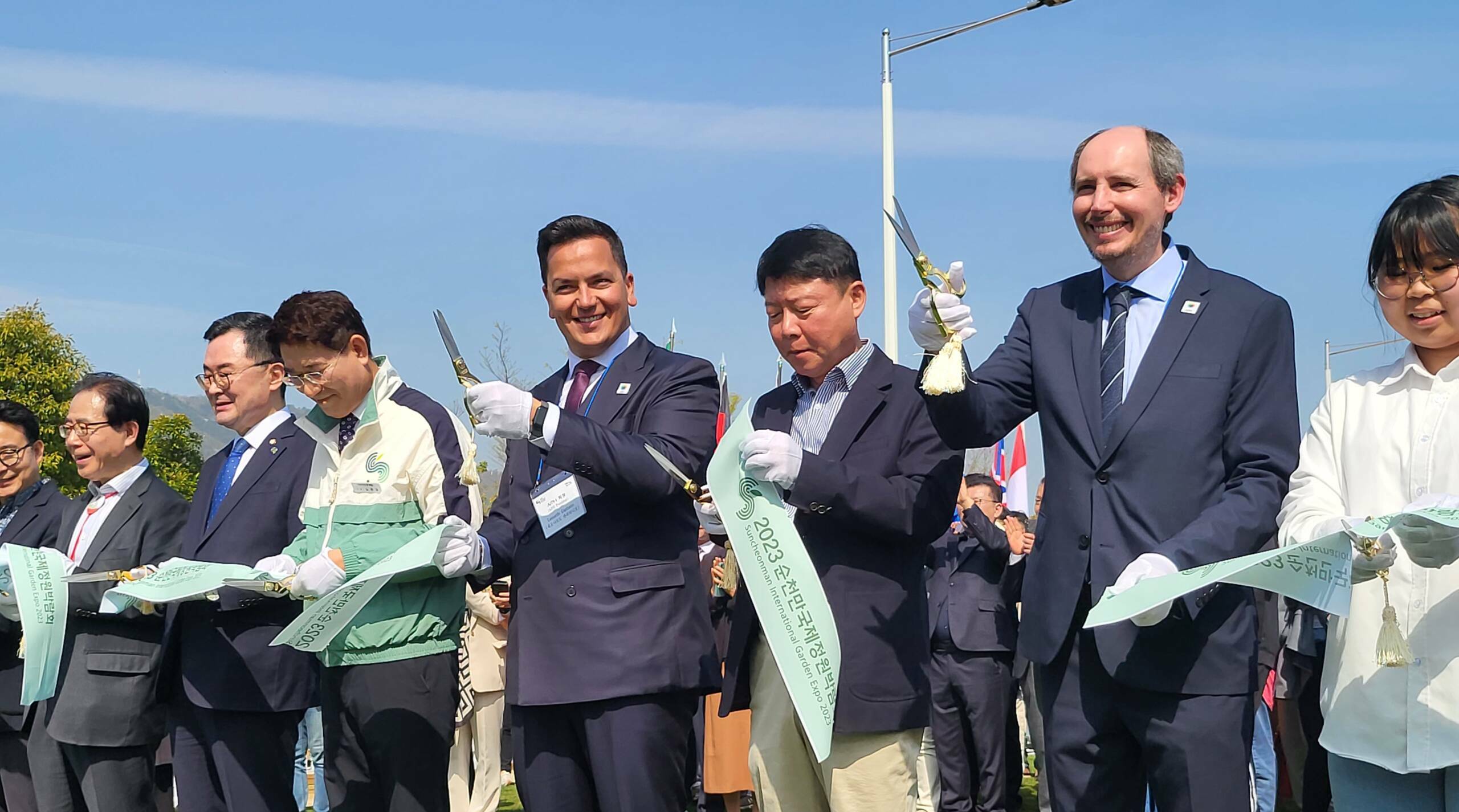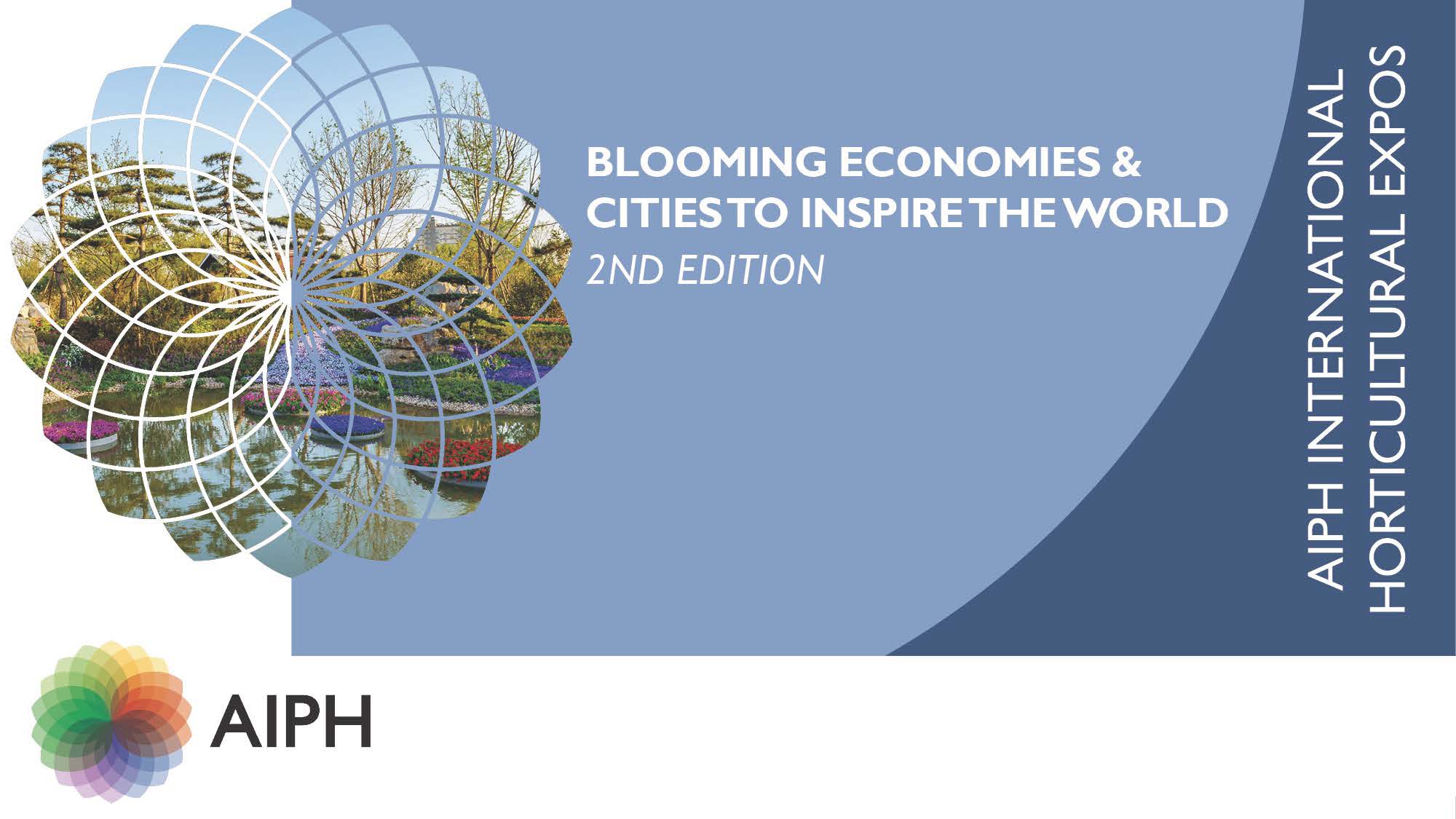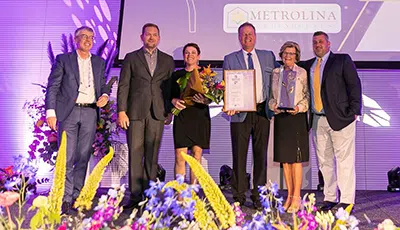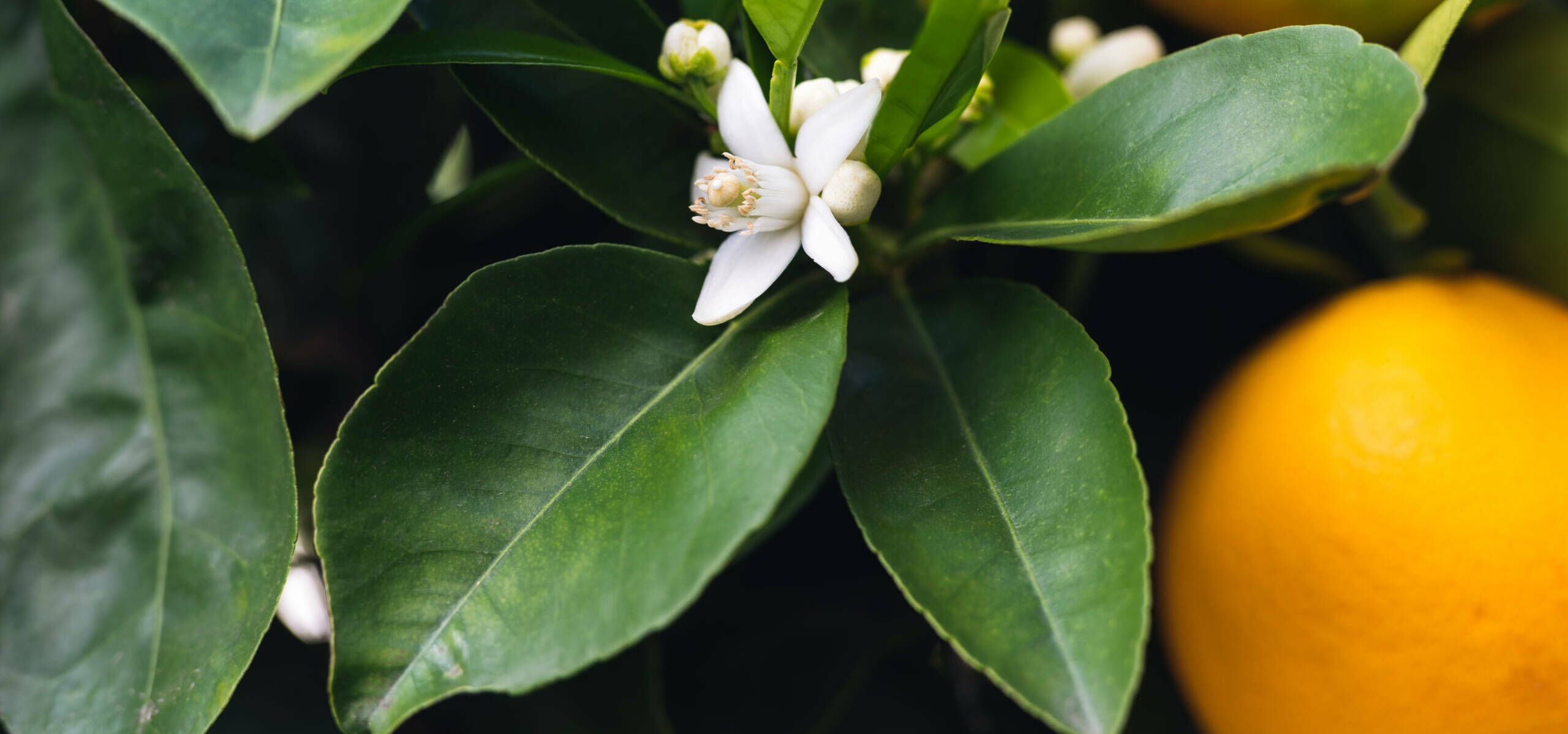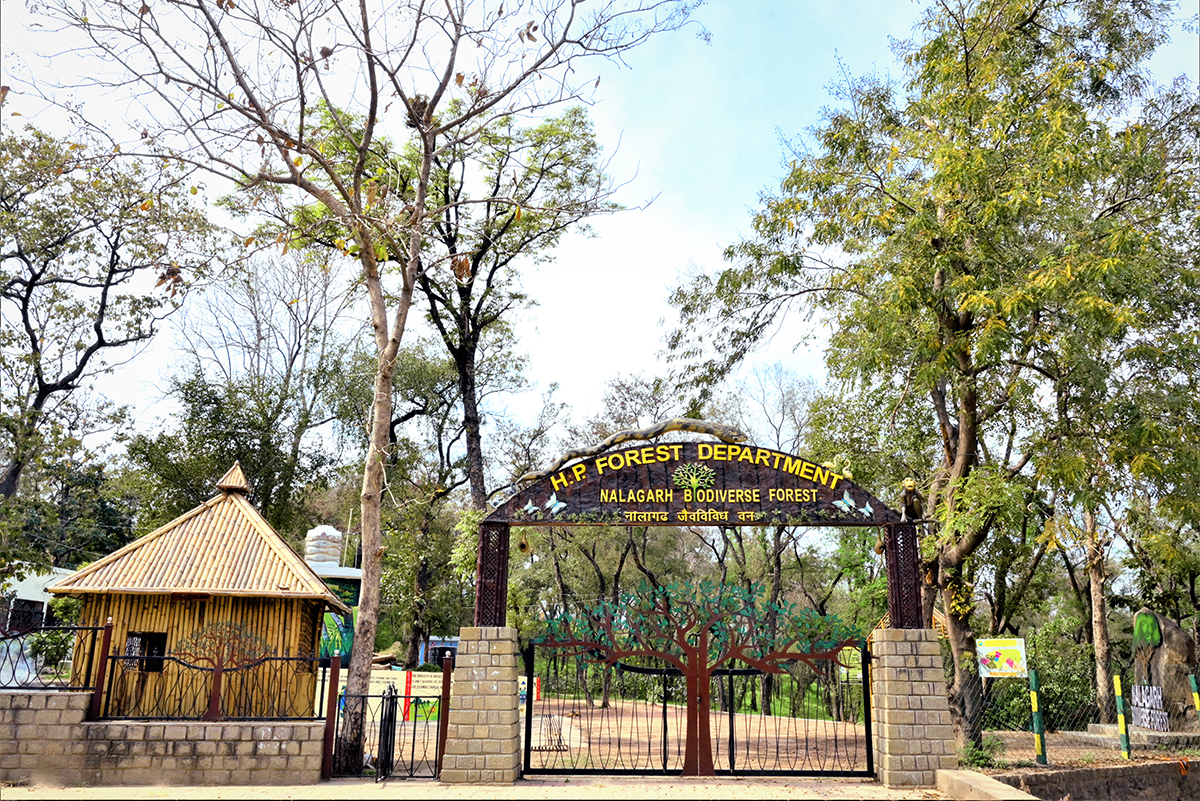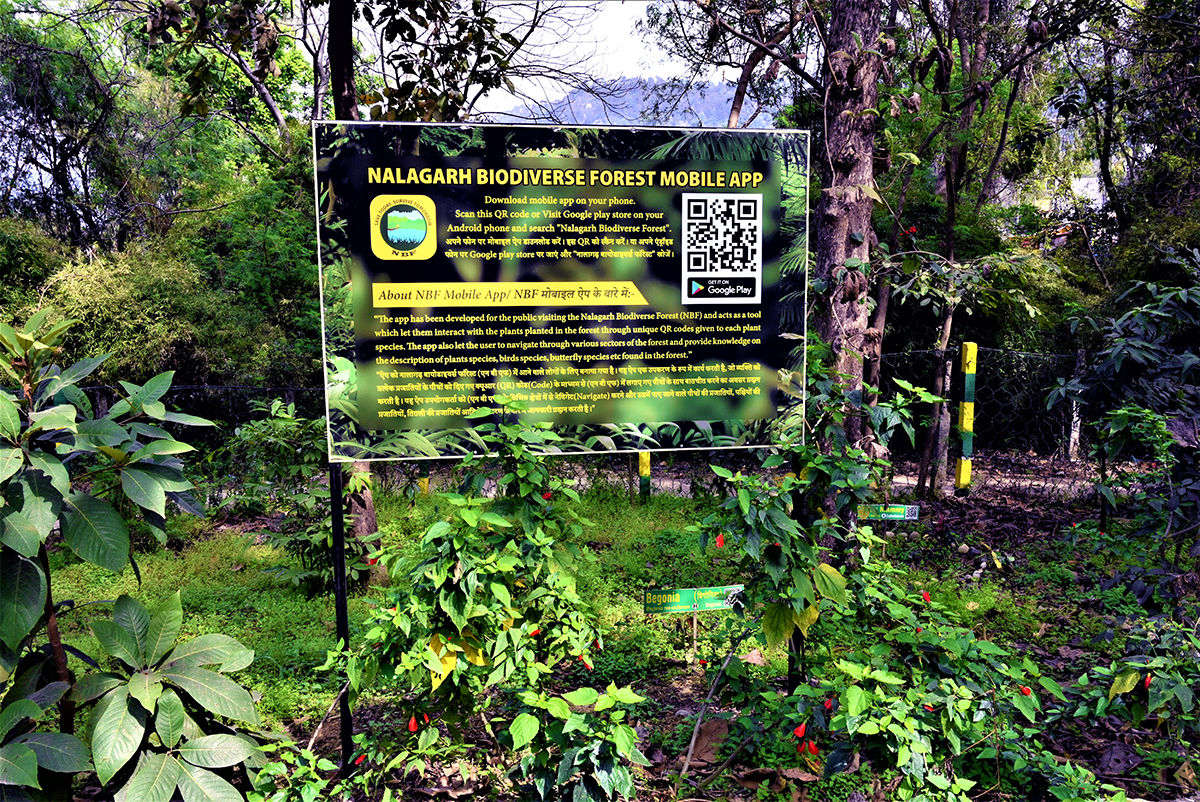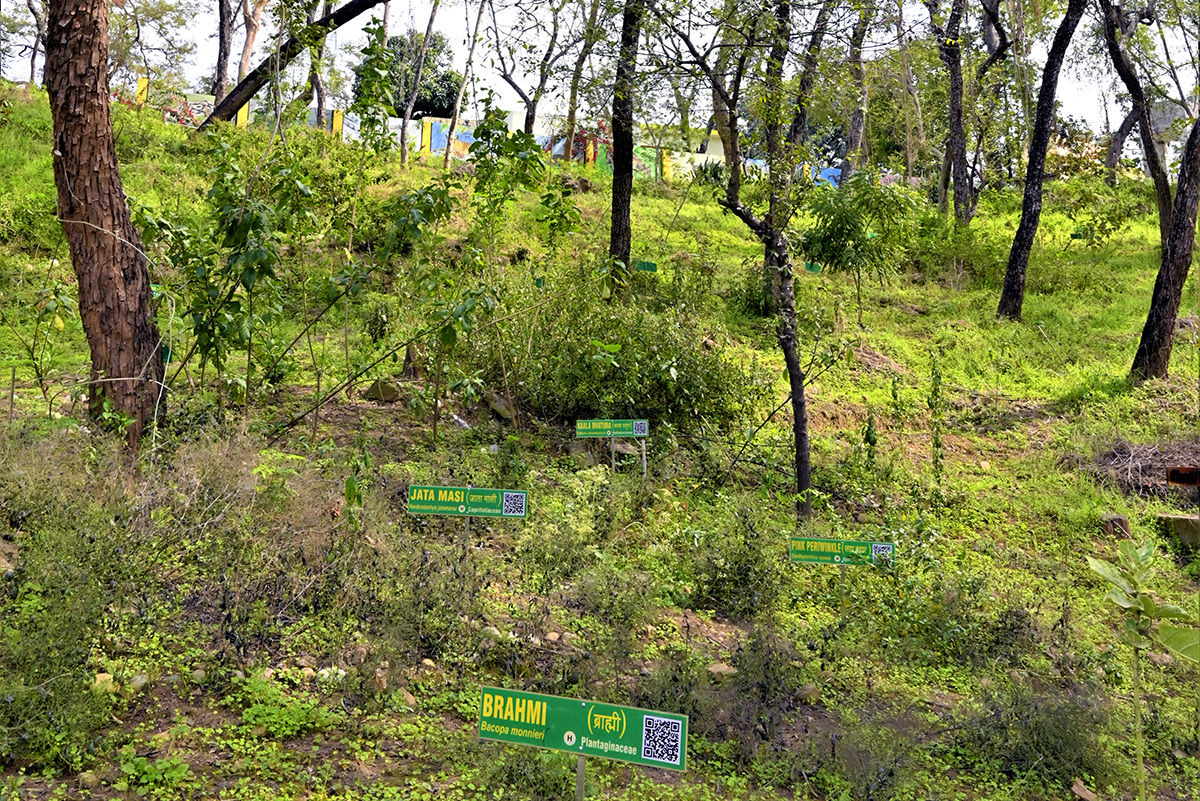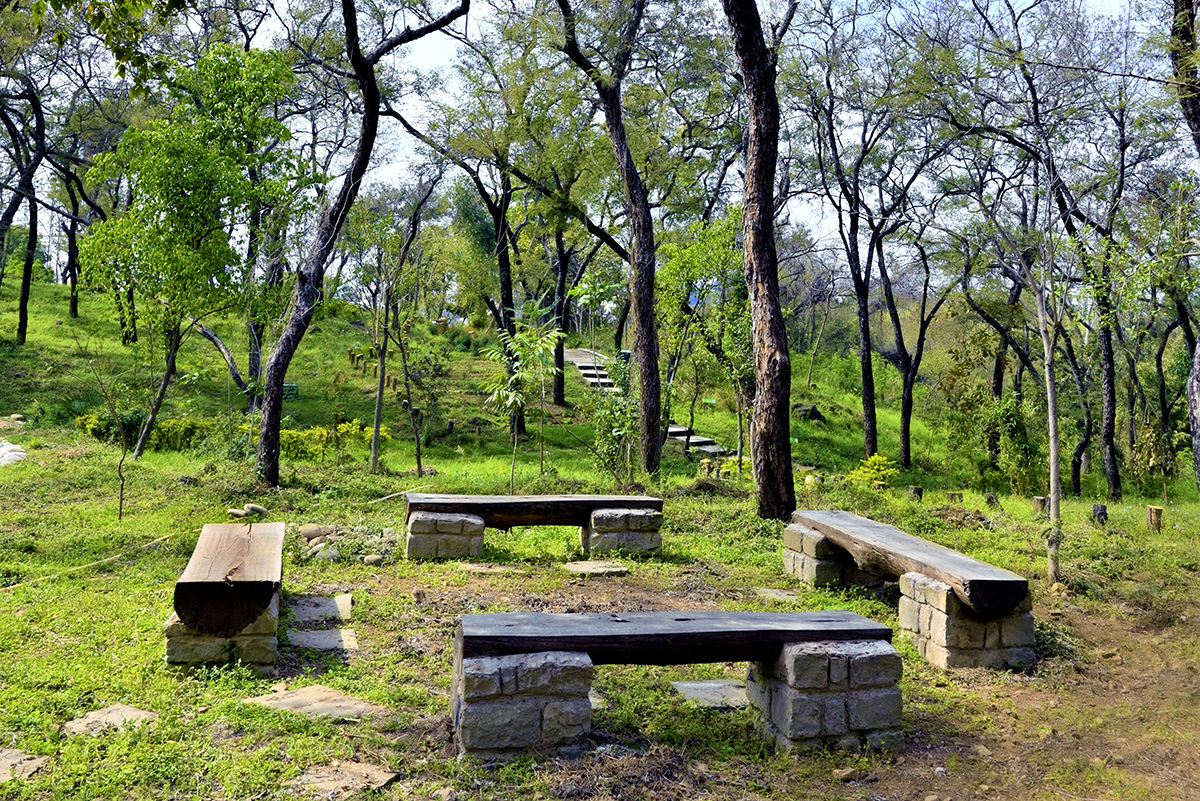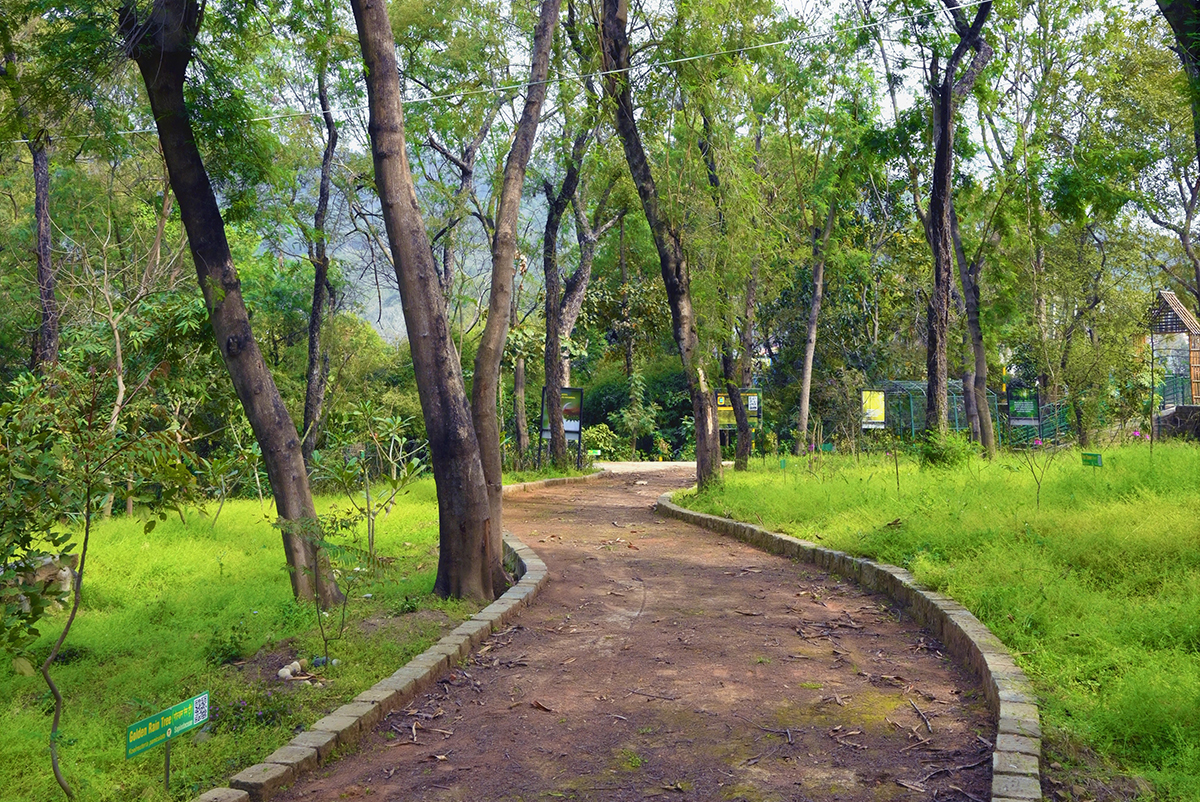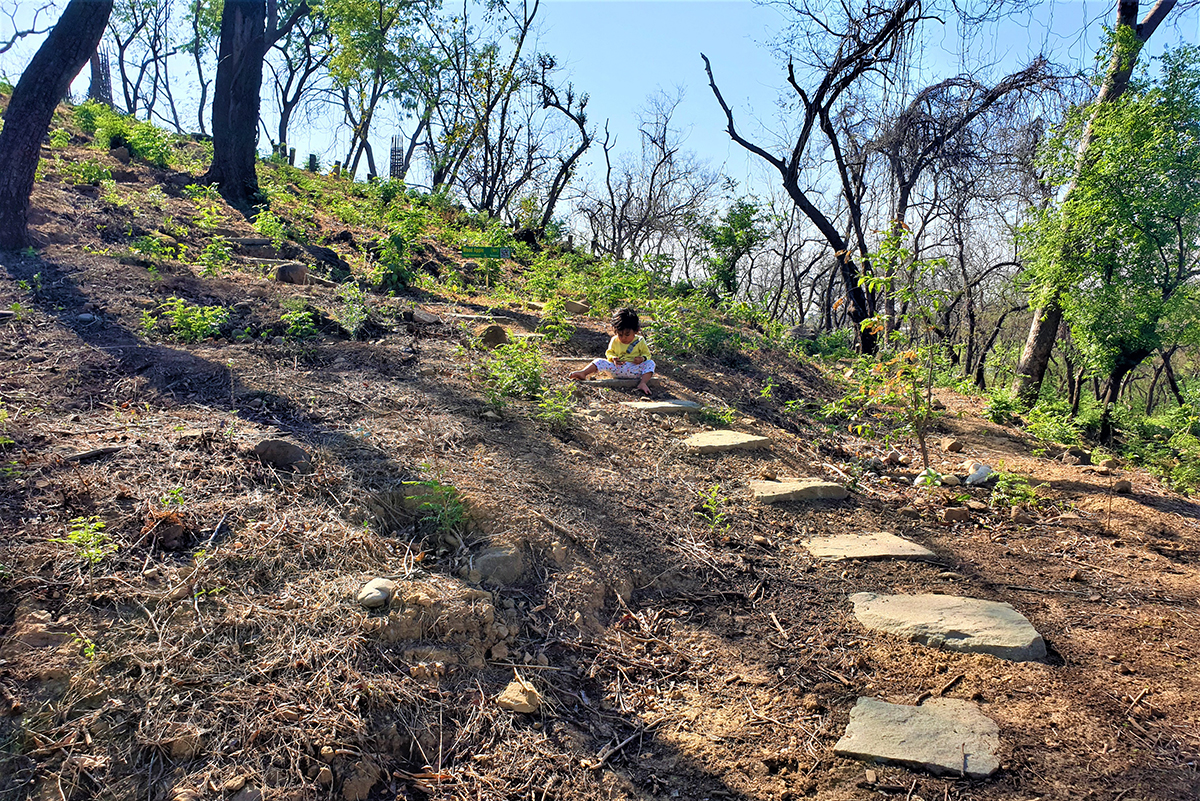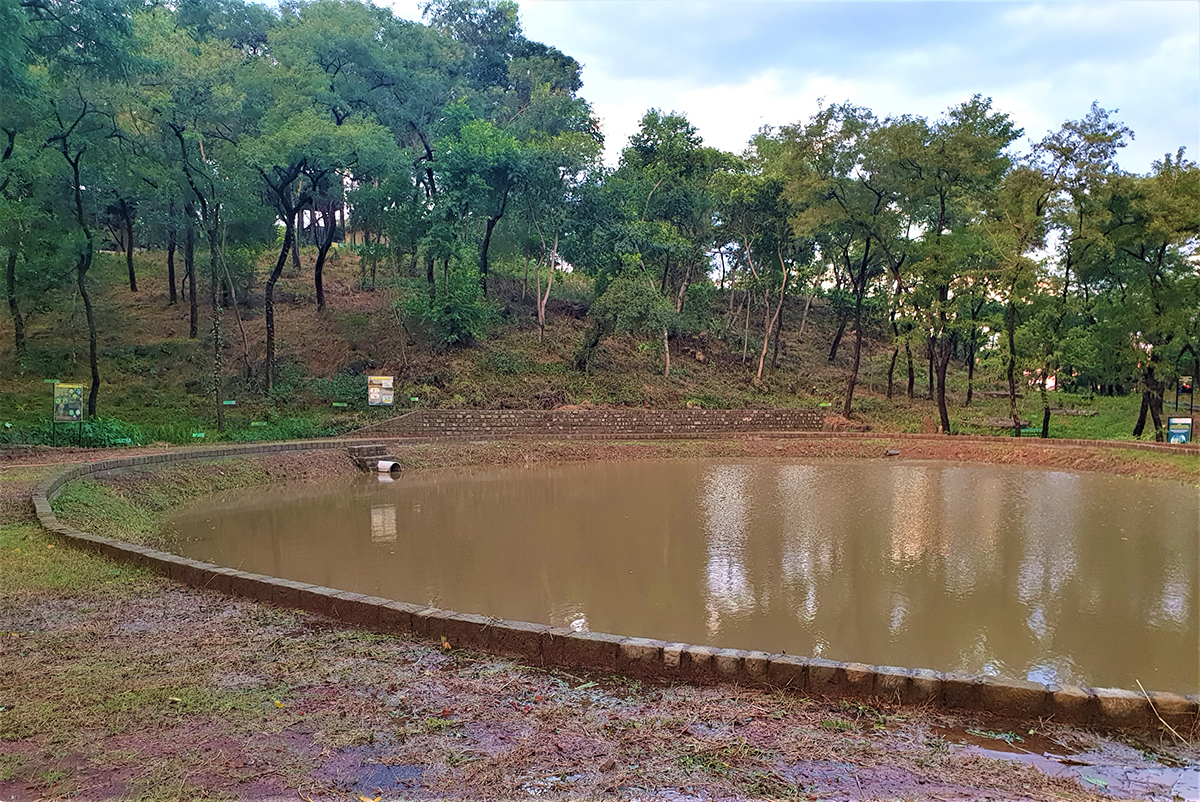Addressing the urban challenge
Breadth of the issue – How are the problem(s) that are being tackled by your initiative affecting citizens/local businesses or a significant component of the local wildlife?
The problems that are being tackled by our initiative include:
- Loss of floral biodiversity and faunal diversity in cities.
- To check the degradation of forests in city limits.
- Low level of awareness amongst citizens on the importance of biodiversity conservation.
- To keep a check on the spread of invasive alien species.
- To combat increasing air and water pollution in the cities.
Our initiative has increased awareness amongst citizens on biodiversity conservation and made them contribute to conservation by planting diverse native species of plants. Local businesses have started to thrive nearby the forest as visitors load increases, the local wildlife is also thriving due to an increase in floral diversity, canopy density, and moisture retention with rainwater harvesting inside the forest. With increasing awareness amongst citizens on the variety of birds and butterflies found within their city, conservation of their habitat is receiving greater attention.
Depth of the issue – How seriously are the problems being tackled by your initiative impacting the life of the citizens/businesses/wildlife concerned?
The citizens are becoming more aware and knowledgeable of the variety of plants, birds, and butterflies found in their area. Their contribution to biodiversity conservation is impacting their lives to a large extent. The availability of biodiverse nursery inside the forest is impacting local businesses of private nurseries as a variety of species are now being sought by their customers because of increasing awareness amongst citizens. Livelihood generated due to the presence of biodiverse forest in the city is also impacting many lives. Because of the increase in floral diversity presence of wildlife in the forest has increased.
The power of plants and natural ecosystems to deliver benefits
How is the initiative shaped by scientific evidence of the potential for plants and natural ecosystems to deliver benefits?
Green areas in cities especially, for example, parks, often are devoid of diversity of plants and ecosystems as the objective while building them, most of the time is recreation. Although the concept of biodiversity is not new its awareness levels in the general public is quite low. Building a biodiverse forest in a city that can interact with the general public using Information Technology helps not only in biodiversity conservation in situ but also make the general public learn about the importance of the biodiversity. The initiative of Nalagarh Biodiverse Forest is an effort that brings awareness amongst public on the diversity of plants, animals as well as ecosystems like wetlands, drylands, etc. at one place in the city. Hence, such initiatives will generate interest amongst citizens to live green for biodiversity.
How has the city exploited the potential of plants and associated ecosystems to deliver more than one benefit?
The potential of plants and ecosystems has helped in delivering numerous benefits as follows:
- In-situ biodiversity conservation of native plant species.
- Phytoremediation in the non-attainment city.
- Awareness amongst citizens on the importance of biodiversity conservation and providing knowledge on the diversity of species of plants, animals, and ecosystems.
- Contribution to biodiversity conservation by the public who can easily get diverse plant species from the biodiverse nursery located in the forest.
- Enhancement in the diversity of birds, butterflies, etc.
- Forest bathing and a place for recreation, aesthetics.
- Ecological restoration in the area.
- Groundwater recharge in the city.
- Carbon sequestration.
- Livelihood generation.
Innovative and Collaborative Solution
How does the initiative show evidence of feasibility, including on-going financial and logistical support?
The initiative was carried out in total cost of $75,000 in India. Since the initial cost of executing the project is quite less, there is ample scope of replication in other cities. No additional funds have been sought for its maintenance and management as the same is being carried out using income sources on sale of plant species, sale of entry tickets etc.
In what ways is the initiative innovative?
The initiative is innovative in the following ways:
- By scanning QR codes through a smartphone application plant can describe themselves, making it easy for the common citizen to learn about plants.
- One place where citizens not only learn about the diversity of plants but also help conserve species by purchasing them from the biodiverse nursery.
- A place where ecosystem diversity i.e. aquatic ecosystem, wetland ecosystem, forest ecosystem, and dryland ecosystem exists together.
- Conservation of birds and butterflies along with conservation of flora.
- A shift from ornamental park-based recreation facilities in cities to biodiverse forest-based recreation facilities in cities.
- A QR-coded biodiverse forest.
- Biodiversity conservation using rainwater harvesting technique.
- Women’s self-help group which raises diverse plants in the nursery generates funds through the sale of plants that help in managing the forest.
How is the initiative supported by collaborative working across disciplines and sectors?
The initiative is a perfect example of an innovative collaboration in which botanists who identified the plant species, an ornithologist who identified bird species, water engineers who designed wetlands, drylands to create a suitable environment for species, architects who designed the layout of the forest, the software engineers who designated the QR codes to each plant species and created an android mobile application, designers who designed the signboards, civil engineers who executed the work of construction of water ponds and check dams, artists who painted various wall paintings, all of them worked together to create a biodiverse forest for the citizenry.
How does the initiative demonstrate evidence of community support?
Local Women Self Help group is managing the Nalagarh Biodiverse Forest as their livelihood is dependent on it. A professional community of photographers is supporting the forest as it carries out the photography of its clients in the forest. A community of private educational institutes have also come forward for support in management of the forest. Likewise, many other communities are coming forward.
Implementation, Impact and Replicability
How does the initiative demonstrate evidence of a track record of success against pursued objectives?
There has been a constant increase in the footfall of visitors to the Nalagarh Biodiverse Forest. There has been an increasing trend in the excursion exercises by school students. Groundwater recharge in the forest has increased due to rainwater harvesting. Awareness amongst citizens on a variety of plant species and bird’s species found in the native area has increased.
How has the initiative had a ripple effect beyond the scope of the initiative itself, thereby demonstrating a change in the city’s and/or its partners’ way of working with plants?
- By scanning QR codes through a smartphone application plant can describe themselves, making it easy for the common citizen to learn about plants.
- One place where citizens not only learn about the diversity of plants but also help conserve species by purchasing them from the biodiverse nursery.
- A place where ecosystem diversity i.e. aquatic ecosystem, wetland ecosystem, forest ecosystem, and dryland ecosystem exists together.
- Due to increased awareness of the biodiversity of flora, different species of flora are sought by citizens which were never sought by them earlier in the private nurseries located in the city.
How have other cities expressed interest in the initiative, or what potential does it have to interest other cities and be customised to their own circumstances?
The initiative has immense potential to interest other cities as:
- Biodiversity conservation is of utmost importance for overall wellbeing and good health of citizens.
- By QR coding plants, interest on biodiversity is generated amongst citizens especially tech savvy young generation.
- Livelihood generation of locals.
- Where degraded land or degraded forest exists inside the city, the area can be taken up for enriching biodiversity.
- A biodiverse nursery helps citizens to contribute to the cause of biodiversity.
Sustainability and Resilience
What efforts have been made to reduce the carbon footprint of the initiative?
To reduce the carbon footprint:
- Inspection paths have been built with available cut stones
- Sitting benches have been made using salvage timber and cut stones.
- Resting places like huts have been made using local bamboo.
- Wall paintings of animals and birds have been made instead of their plastic sculptures.
- To reduce the use of cement natural clay has been utilized to the extent possible. In the construction of the jogging track burnt clay from a brick kiln has been utilized.
How have the anticipated impacts of climate change been considered?
Due to the anticipated increase in temperatures due to climate change, watershed management, and rainwater harvesting have been carried out to increase moisture content inside the forest. Increased moisture content in the soil helps in creating a local microclimate which is suitable for local native species.
What processes does the initiative include for it to be considerate in its use of soils and other natural resources?
- No soil was imported from outside in carrying out the initiative. Natural forest litter soil was present in the degraded forest.
- Groundwater is used during summer months to water plantations inside the forest but since rainwater harvesting has been carried out which further helps in recharging groundwater in the area, it effectively recharges the groundwater utilized during the dry season
- The dependence on watering decreases as the plants cross age of more than 5 years after plantation. Hence decreasing reliance on groundwater for watering plantations in long run.
Monitoring, Maintenance, and Management
How has the initiative been designed and implemented so that long-term needs for management and maintenance are reduced and can be met?
Management and maintenance of the Nalagarh Biodiverse Forest are being carried out by the local Women Self Help group whose source of income comes from the sale of entry tickets to the biodiverse forest, sale of souvenirs, sale of plant species from the nursery. Apart from this excursion tours of school children also aid to their income.
What protocols are in place to facilitate monitoring of results?
Protocols include one permanent forest guard working on behalf of HP Forest Department and stationed at Nalagarh Biodiverse Forest.
How has the initiative been enhanced in response to monitoring of results?
Enhancements have been made to enrich the area with more floral diversity. To engage visitors wall paintings have been made of various birds and animals found in the forest. The android mobile app has been made more user friendly with definitions in both English and Hindi languages. Also, all the awareness sign boards have been designed with matter both in Hindi and English language to bring awareness amongst maximum public.





